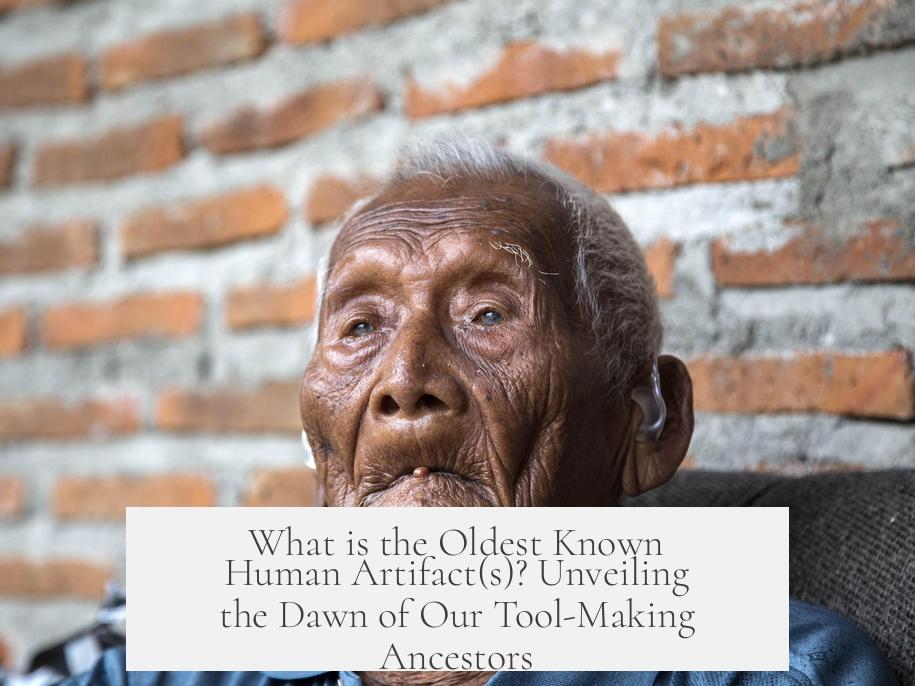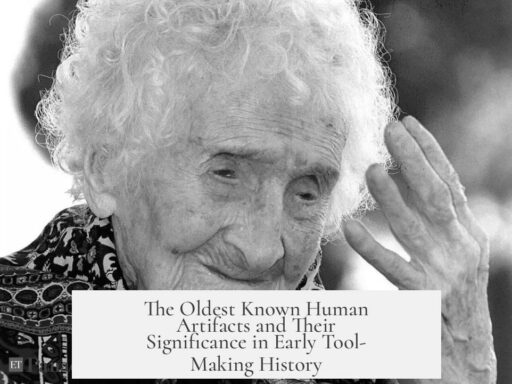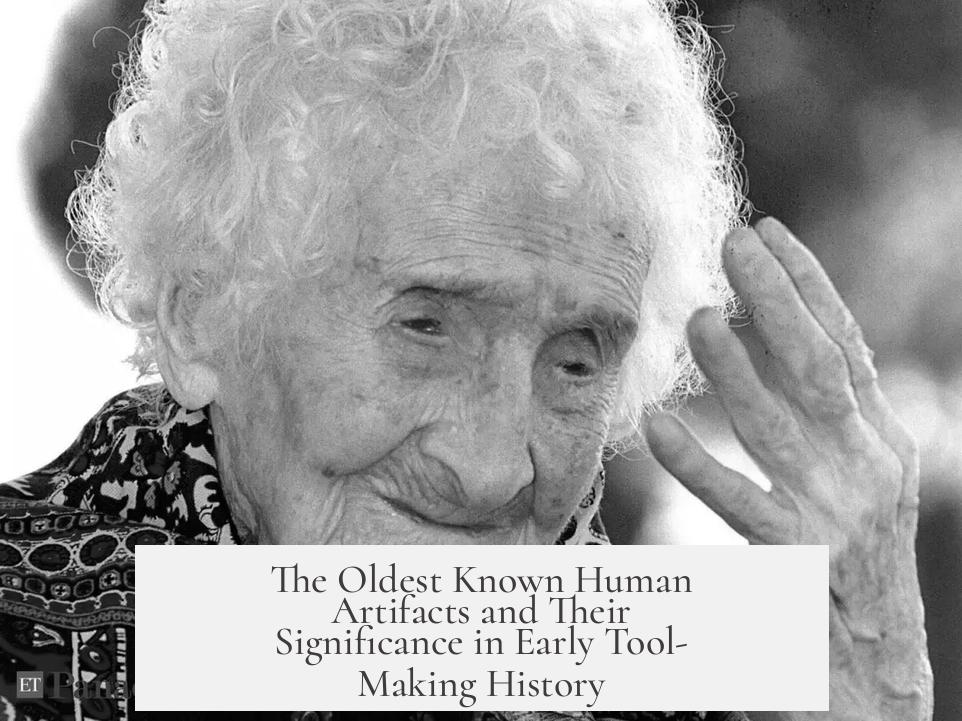The oldest known human artifacts are stone tools dating from about 2.6 to 2.5 million years ago, discovered at Gona in Ethiopia. These tools represent the earliest identified evidence of human ancestors shaping stone for practical use. They belong to the Oldowan technological tradition, marking the beginning of stone tool production.
The Gona tools include simple choppers created by striking large pebbles to produce a cutting edge. These early tools had multiple uses, such as cutting plants, chopping wood, and butchering animals. Smaller flakes broken off from pebbles served finer purposes like scraping animal skins or boring holes. These artifacts demonstrate versatile, all-purpose tools.
Oldowan tools remained largely unchanged for over a million years. The consistent use of this toolkit signals its effectiveness and its importance in early human development. These discoveries reveal that while stone tool making was the earliest form we can study, it is likely that human ancestors experimented with organic materials such as wood and bone before this. However, such materials rarely survive archaeologically.
Over time, human ancestors improved on this basic technology. They developed more controlled methods of flaking stones, enabling the creation of bifacial handaxes that shaped stone cores into more precise forms. This advancement produced sharper flakes with predictable shapes, facilitating complex tasks.
By later phases of prehistory, roughly 2.6 million years after the Gona discoveries, the use of core tools declined. Instead, humans crafted tiny, razor-sharp flakes that were assembled into composite implements. This reflects a long trajectory of increasing sophistication in toolmaking, beginning with the simple yet crucial Oldowan choppers.
- Oldest known tools date to 2.6–2.5 million years ago from Gona, Ethiopia.
- Oldowan choppers were basic, multi-use stone tools.
- Smaller flakes from stone cores served specialized tasks.
- Tool technology evolved into bifacial handaxes and later microlithic tools.
- Organic tools likely preceded stone tools but have not survived.
What is the Oldest Known Human Artifact(s)? Unveiling the Dawn of Our Tool-Making Ancestors

So, you’re curious about the oldest known human artifacts? The oldest known human artifacts are stone tools dating back roughly 2.6 to 2.5 million years, discovered in Gona, Ethiopia. They mark the earliest evidence of our ancestors shaping stones to create useful implements. But there’s more to this ancient story than just a few rocks lying around.
Let’s dive into the fascinating world of these primordial tools and uncover how they transformed our ancestors’ lives and set the stage for human innovation.
The Oldest Artifacts: More Than Just Stones
At first glance, these tools look like nothing more than crudely chipped stones. Yet, they represent a huge leap forward—a moment when early humans stopped merely picking up natural objects and started crafting tools. These tools are called Oldowan Gorge choppers, named after the Oldowan industry, and date to about 2.5 million years ago.
Interestingly, while these are the oldest *identified* stone tools, it’s quite likely that even older tools exist but haven’t survived or been recognized. After all, early humans probably experimented with wood, bone, or other materials much earlier, but such organic materials rarely fossilize or persist for millions of years. The stones endure while the wood rots away. This context makes the Gona tools a priceless window into our past.
Why Are the Gona Tools So Important?
The Gona assemblage in Ethiopia is not just a random collection of rocks. These are the earliest examples of humans intentionally shaping their environment. The makers took a large pebble and struck off flakes to create a sharp edge—called a chopper. That edge was a game changer.
Imagine having a tool to slice plants, chop wood, or butcher animals. These choppers did all of that, providing early humans with new ways to access food and resources. The smaller flakes produced during this process weren’t waste. They became handy tools themselves—perfect for scraping animal skins or boring holes. Quite literally, a case of “one stone, multiple uses.”
For over a million years, the Oldowan toolkit remained remarkably stable. This “rough and ready” set was our ancestors’ Swiss Army knife, adapted through trial, error, and experience.
Oldowan Tools: The Foundation of Progressive Innovation
The simplicity of these Oldowan tools might make you wonder: if they lasted so long, why change? The answer lies in how technology evolves—slow steps toward efficiency and specialization.
Over time, early humans learned to control the way they chipped stones more precisely. The flakes and cores were shaped into bifacial handaxes—tools with sharp edges on both sides. This evolutionary leap in toolmaking meant better hunting and processing tools. It wasn’t just about survival anymore; it was about mastery.
Eventually, by the end of the Stone Age, the core tools were less important. Instead, the focus shifted to using tiny, razor-sharp flakes that could be attached to handles or shafts—a bit like early Swiss Army knives but far more sophisticated. These microliths gave humans finer control and expanded their range of activities. So, the Oldowan tools at Gona were the spark that set off an incredible journey of human creativity.
A Practical Takeaway: Why Does This Matter Today?

Today, we live surrounded by effortless technology—smartphones, electric tools, machines—all built on the foundation of early toolmaking. Understanding the oldest known human artifacts reminds us where this journey began. Those first chipped stones were the tools that helped us survive, explore, and eventually thrive.
Next time you grab a kitchen knife or a screwdriver, allow yourself a moment to appreciate how it all began with a simple pebble and a keen mind, 2.6 million years ago.
Final Thoughts: The Mystery Still Lingers
Could there be even older artifacts hidden somewhere? Probably yes. Archaeologists keep searching. Every new find challenges our understanding, sparking fresh questions. Were there tools older than Gona’s? What materials did humans use that left no trace? And how did this early technology influence social and cognitive evolution?
One thing’s for sure: The Oldowan tools are a solid, tangible link to the dawn of human ingenuity. They remind us that at our core, humans are makers and problem-solvers. That spark of creativity, sparked millions of years ago with a chipped rock, still drives us.
What would you make if you had the chance to craft tools from scratch? Maybe life’s simplest inventions are the most profound.



